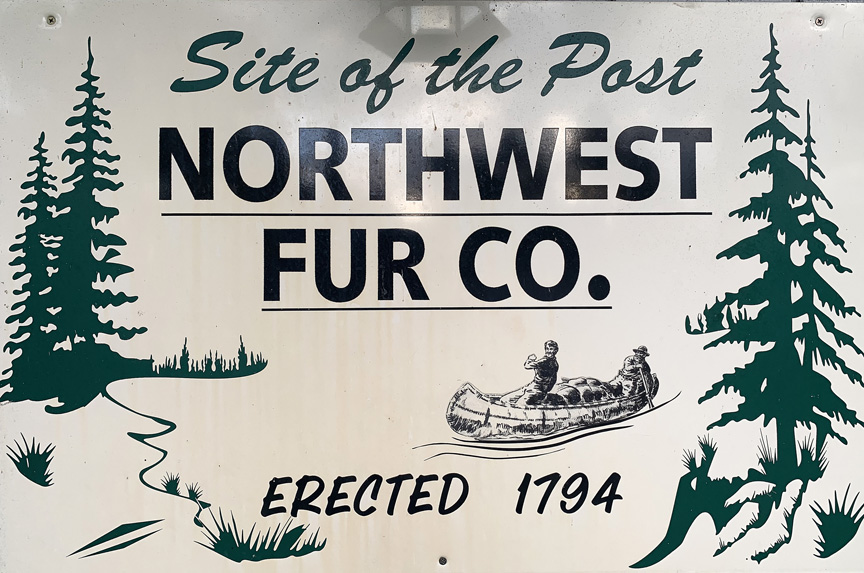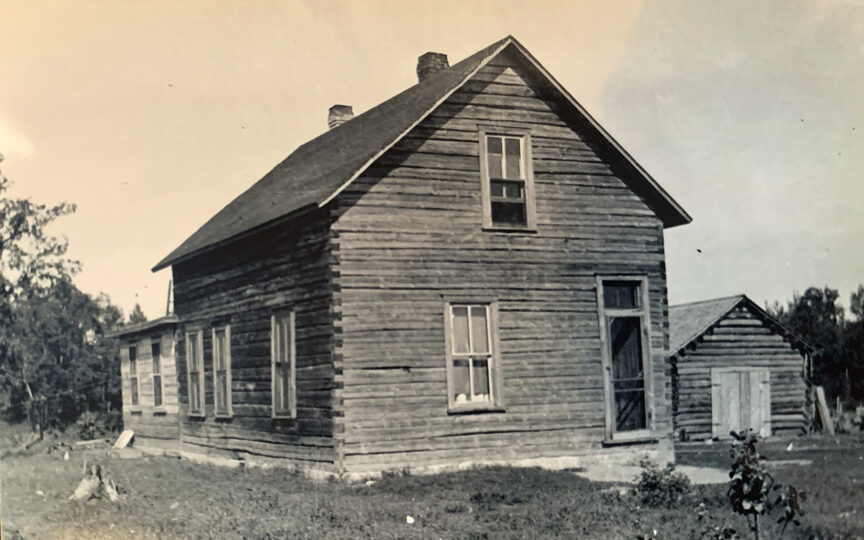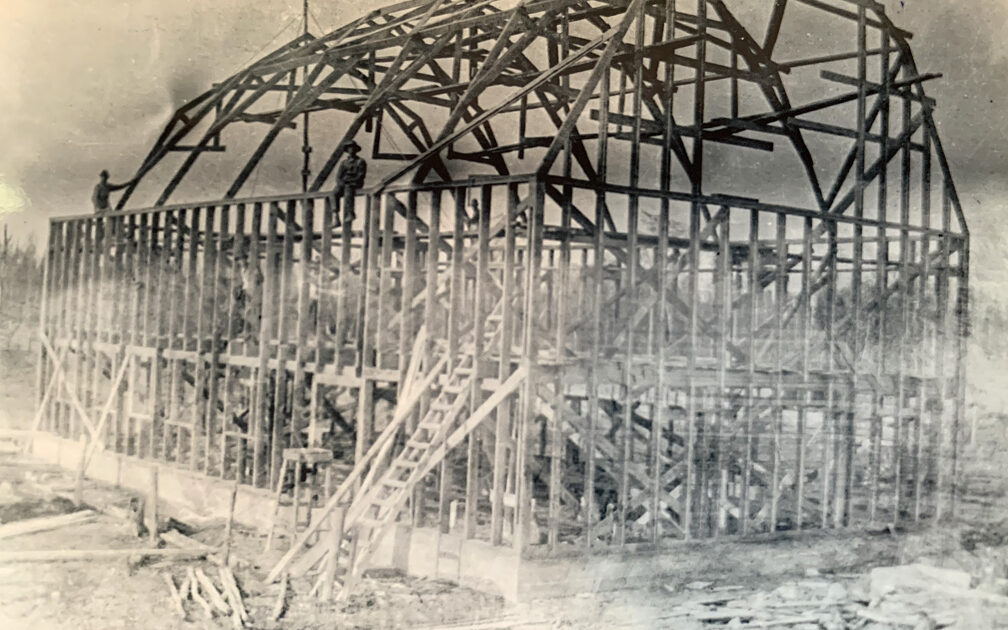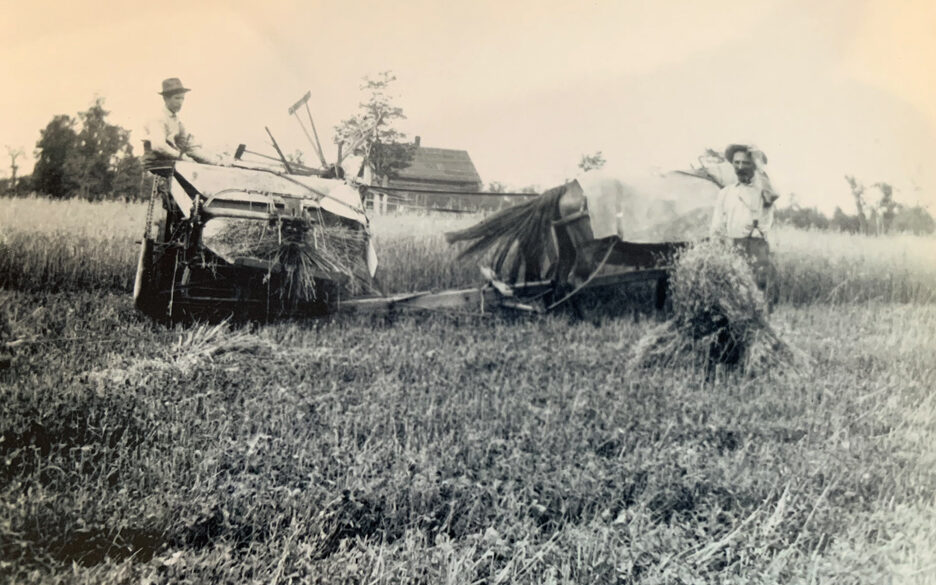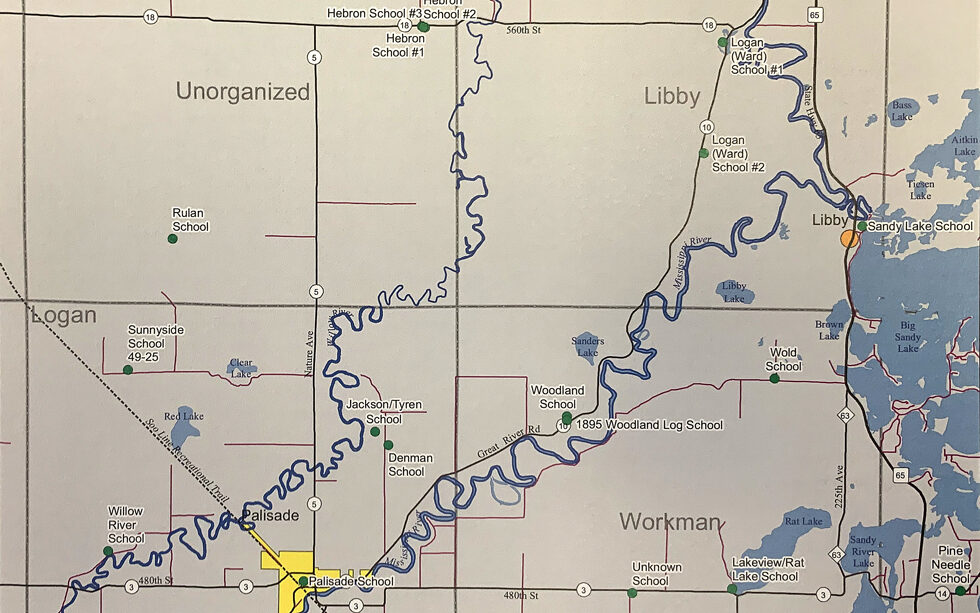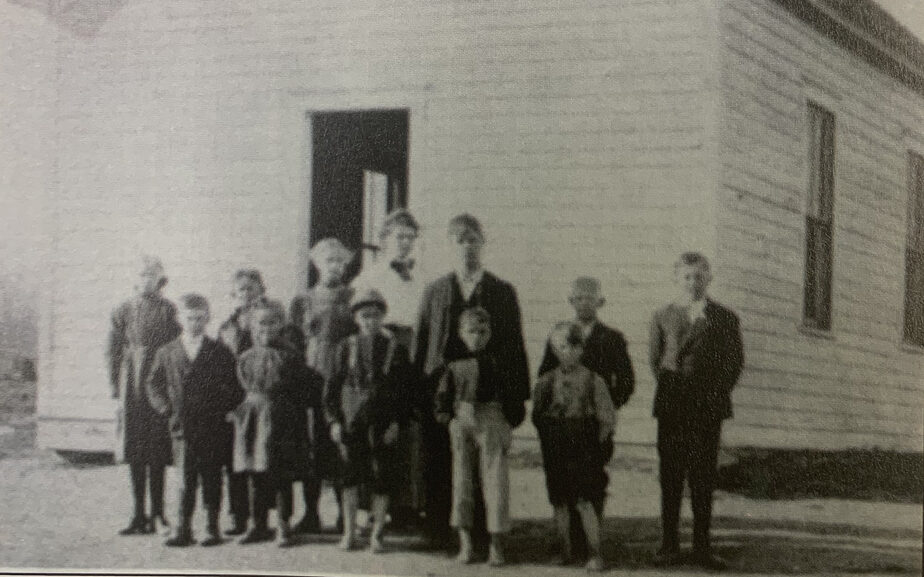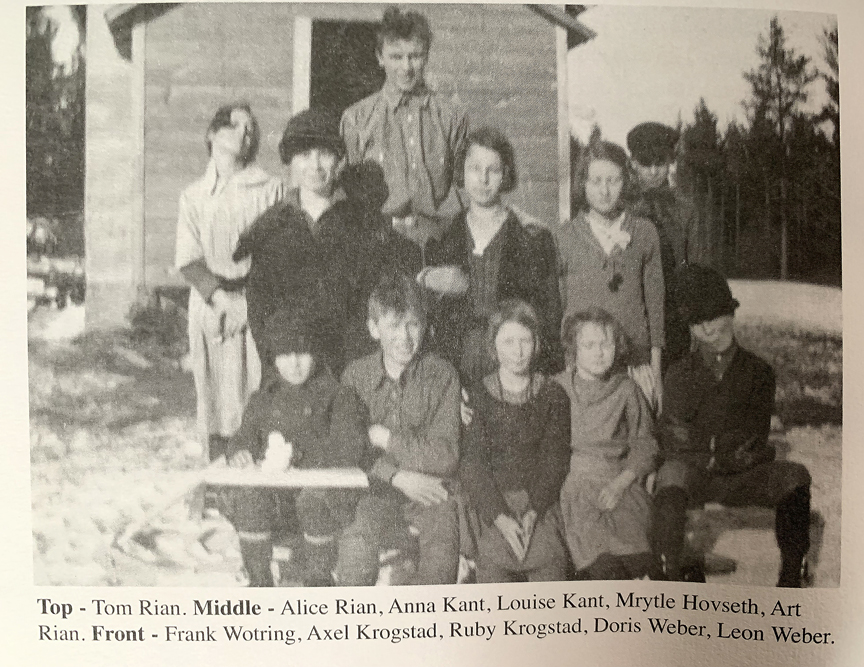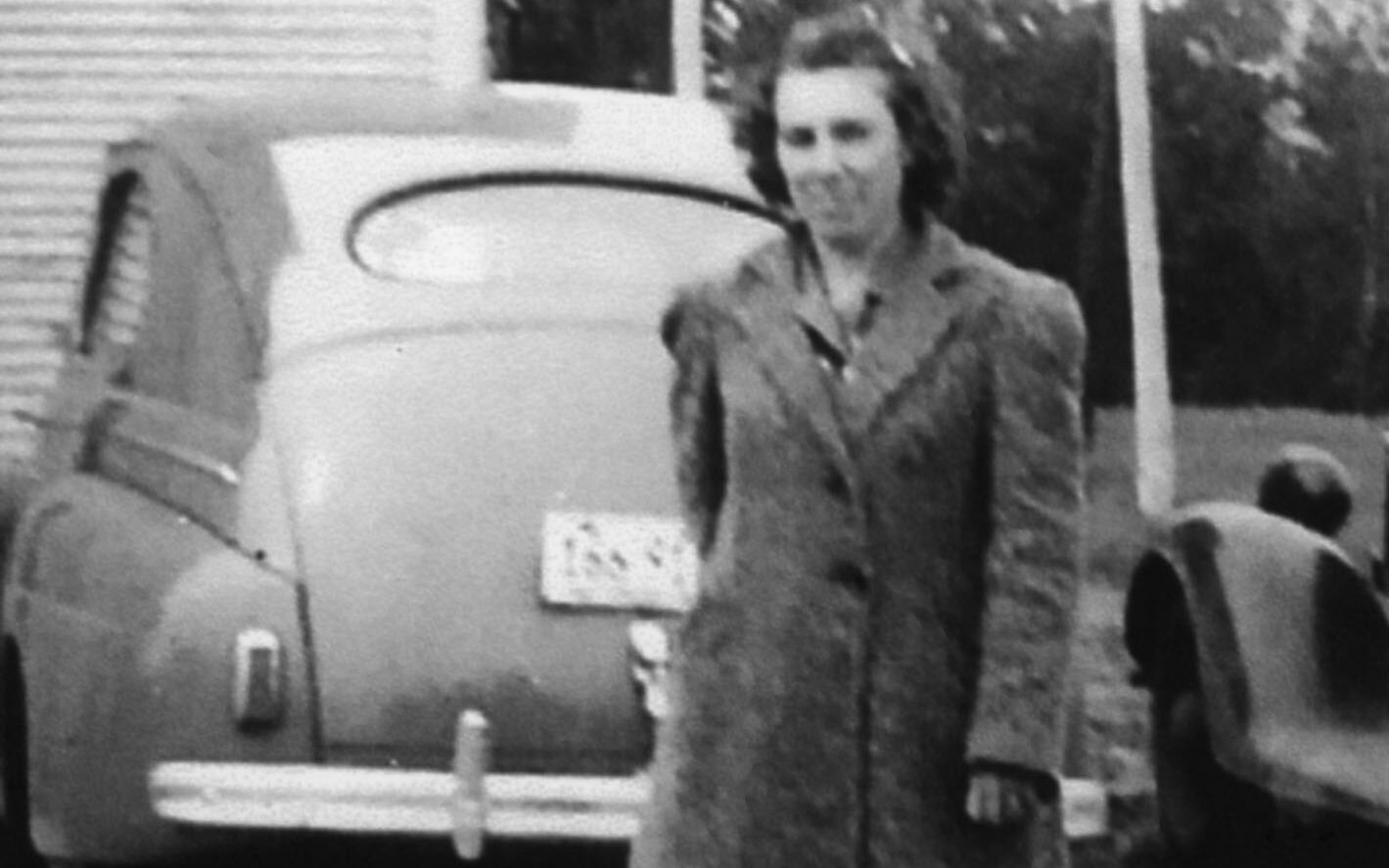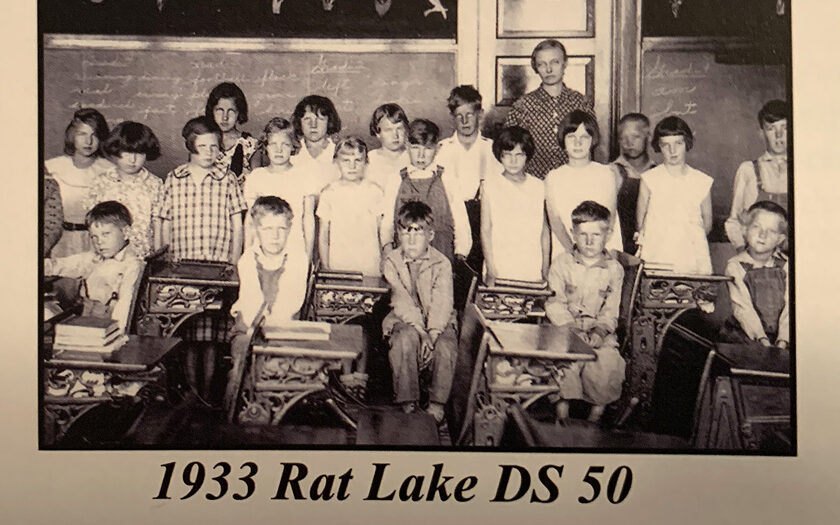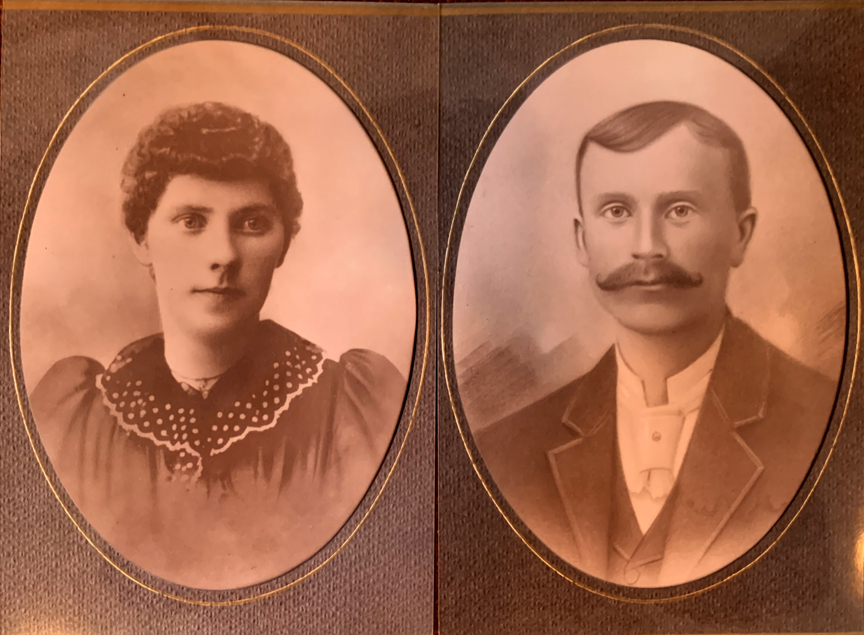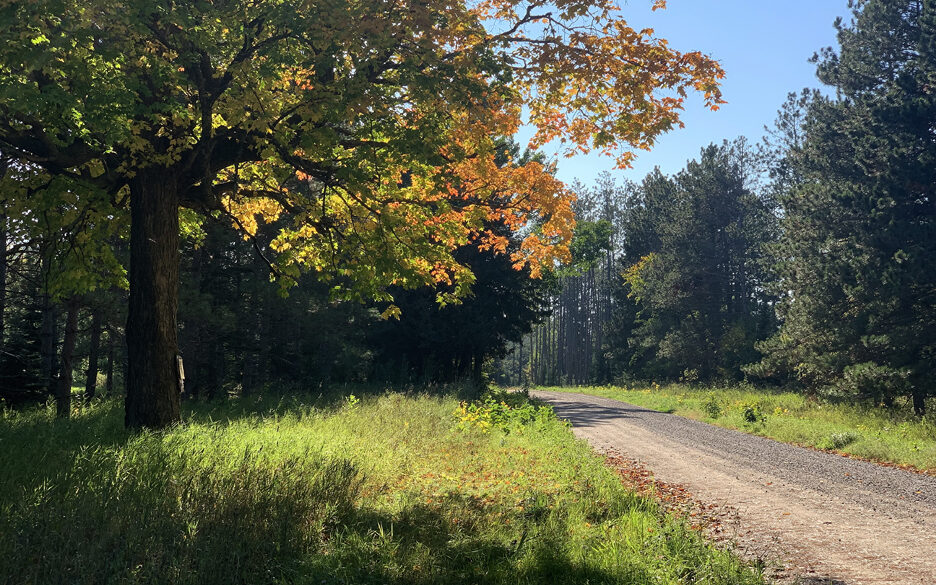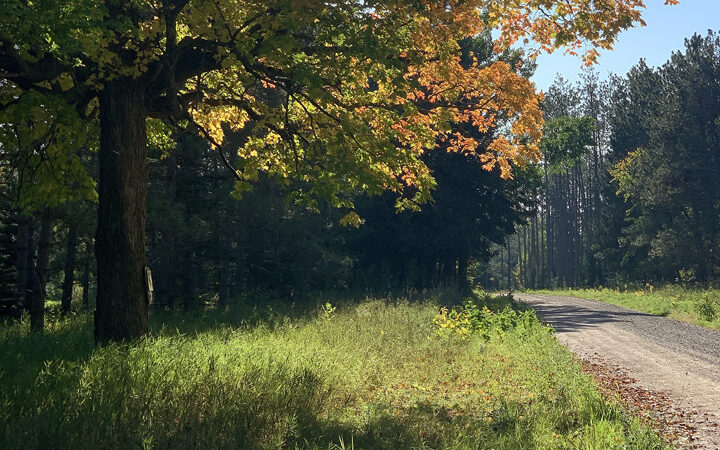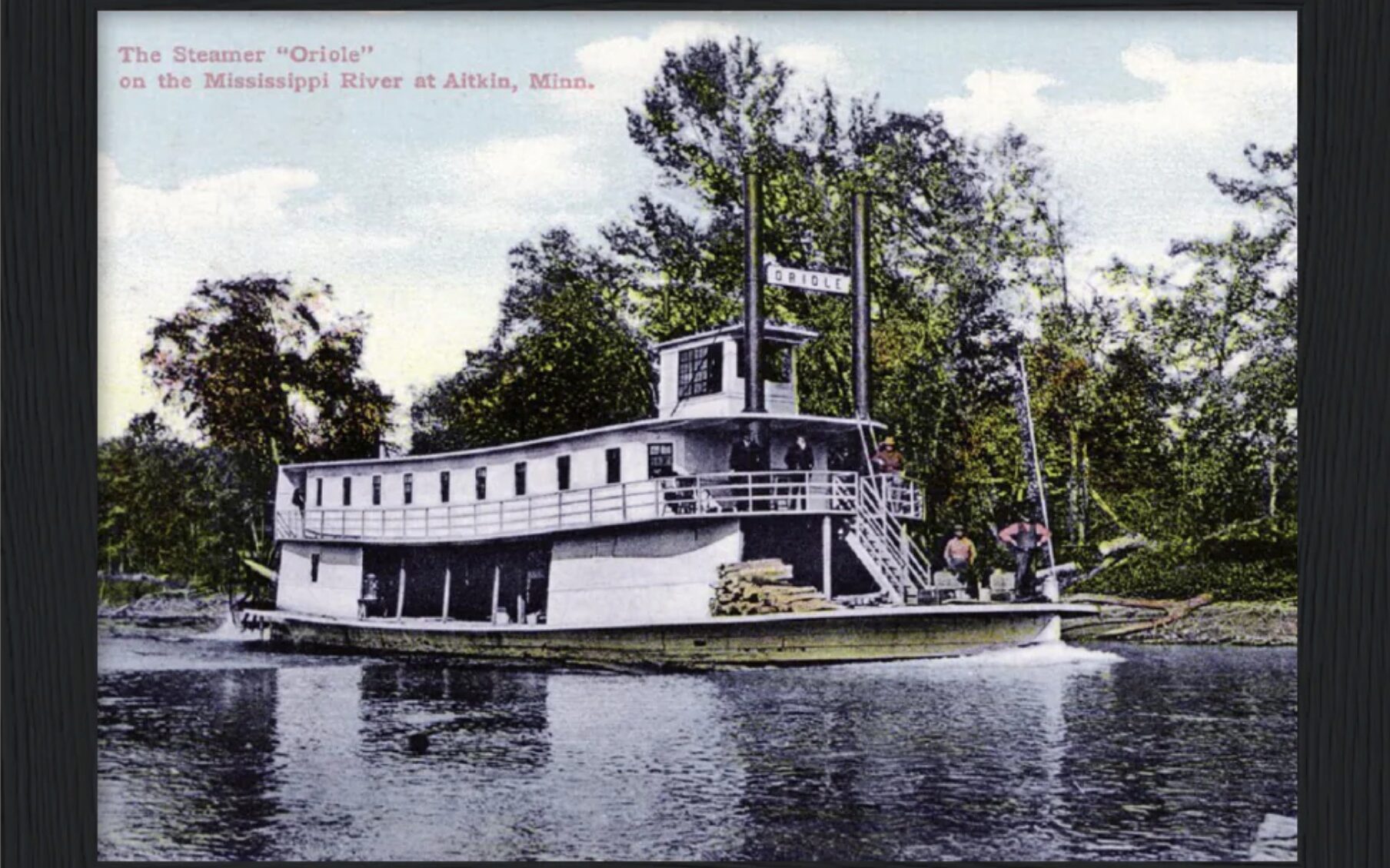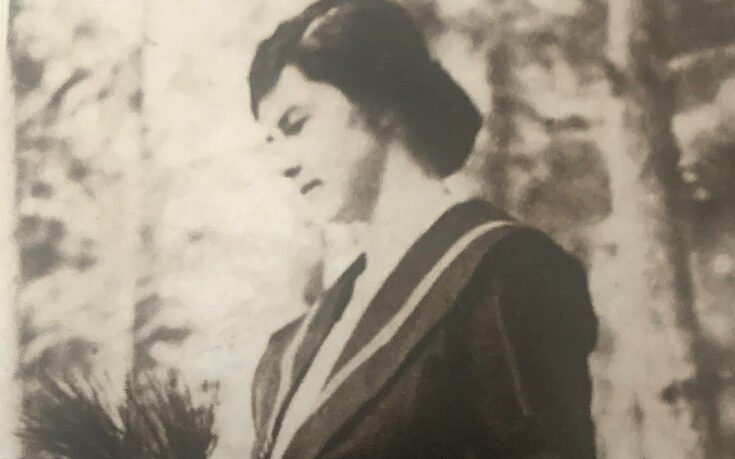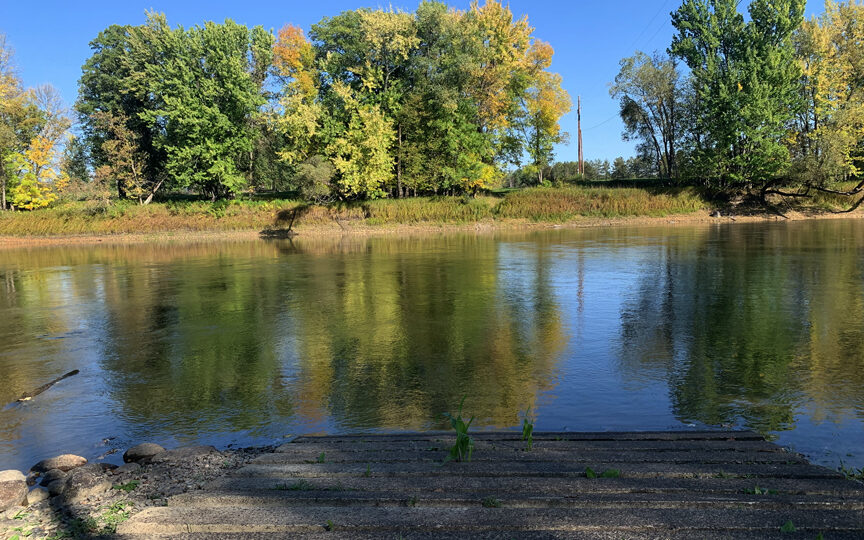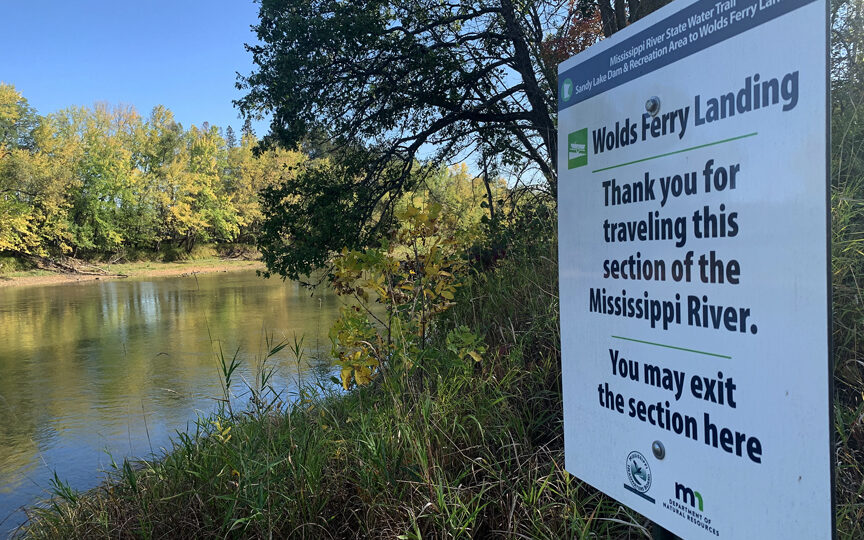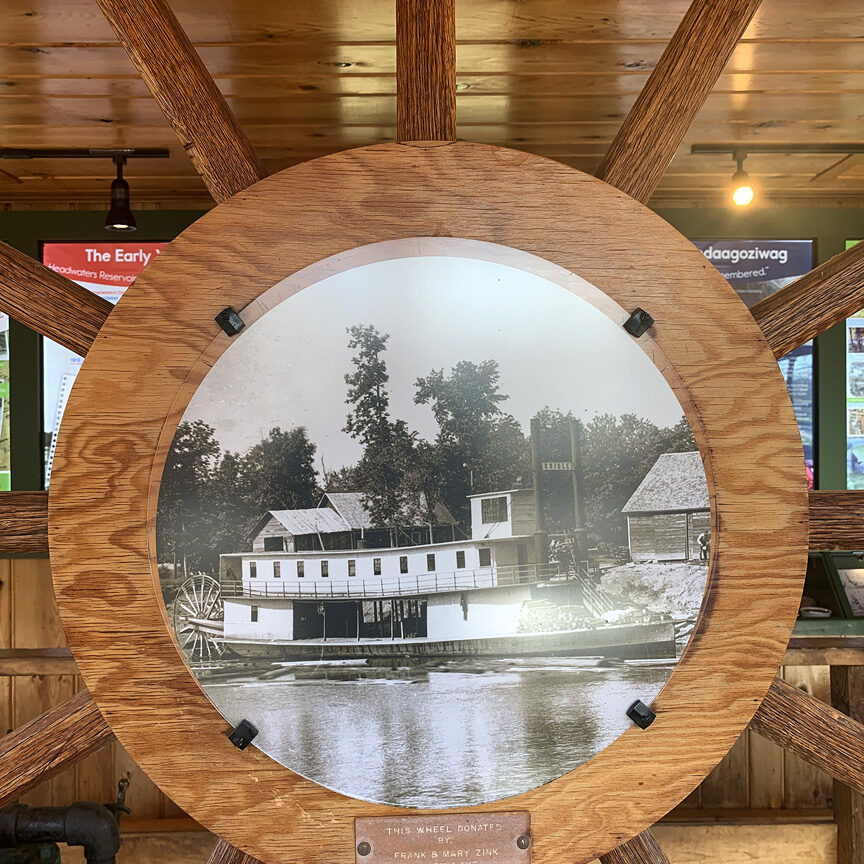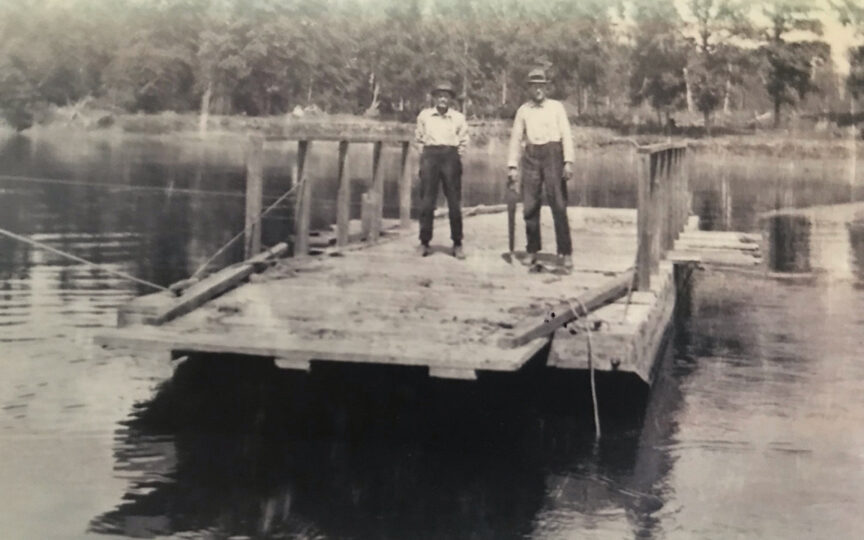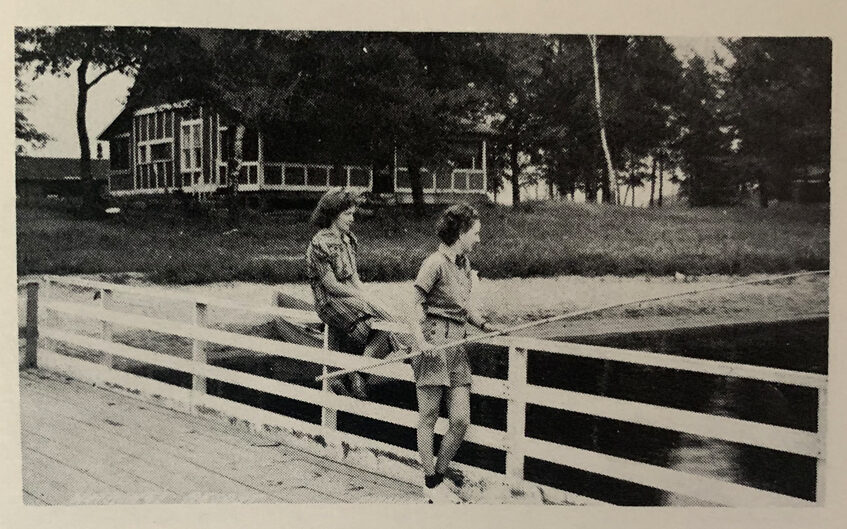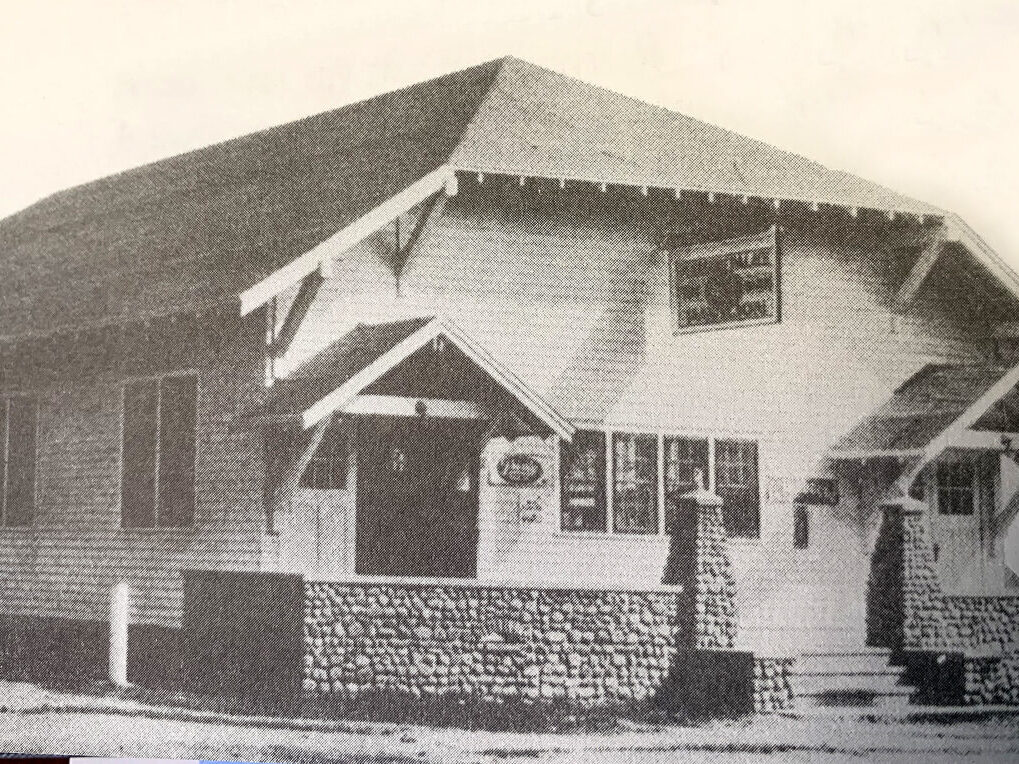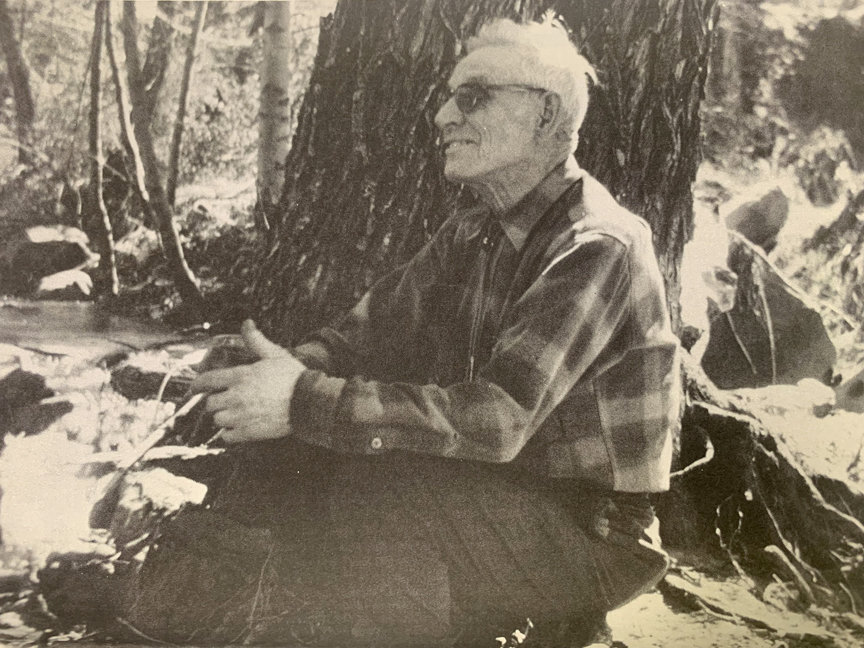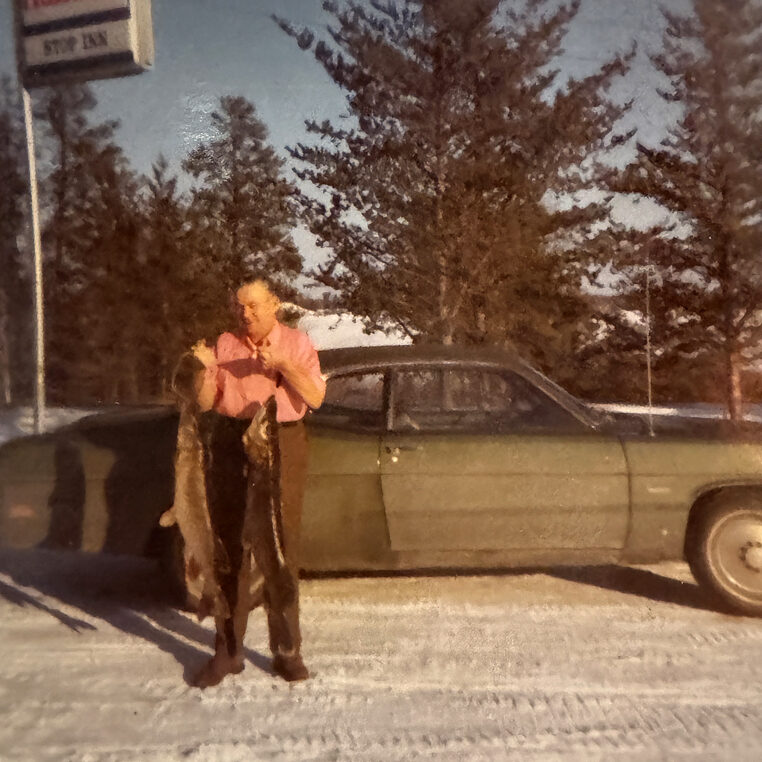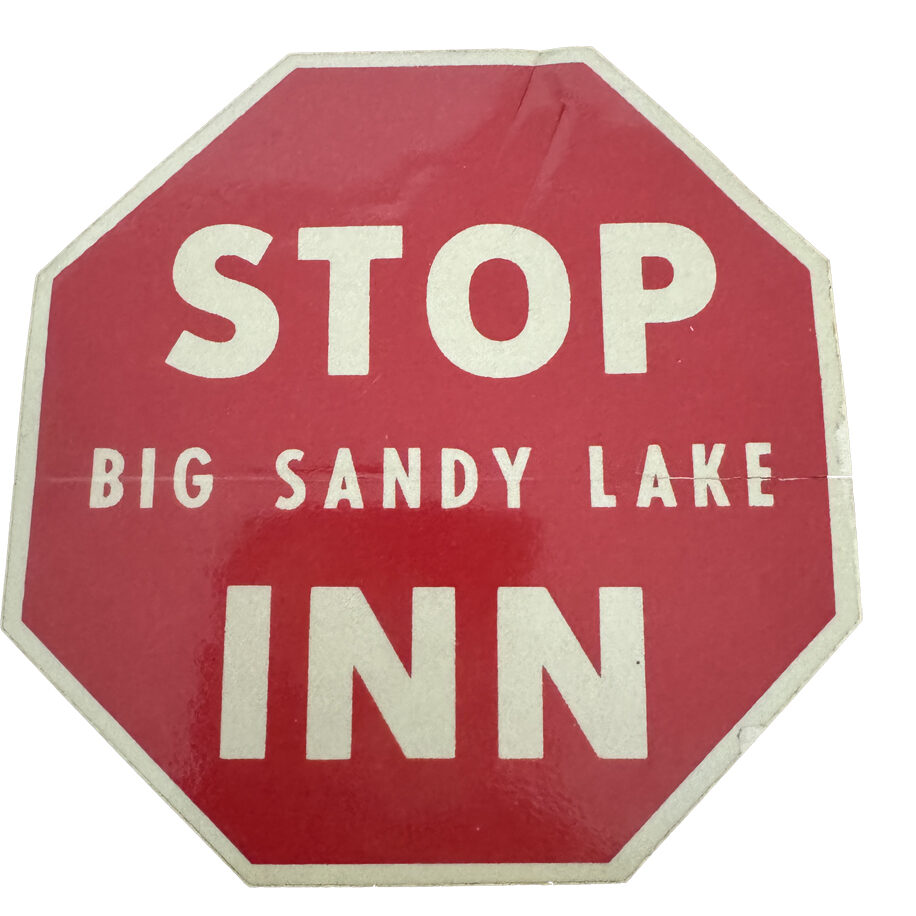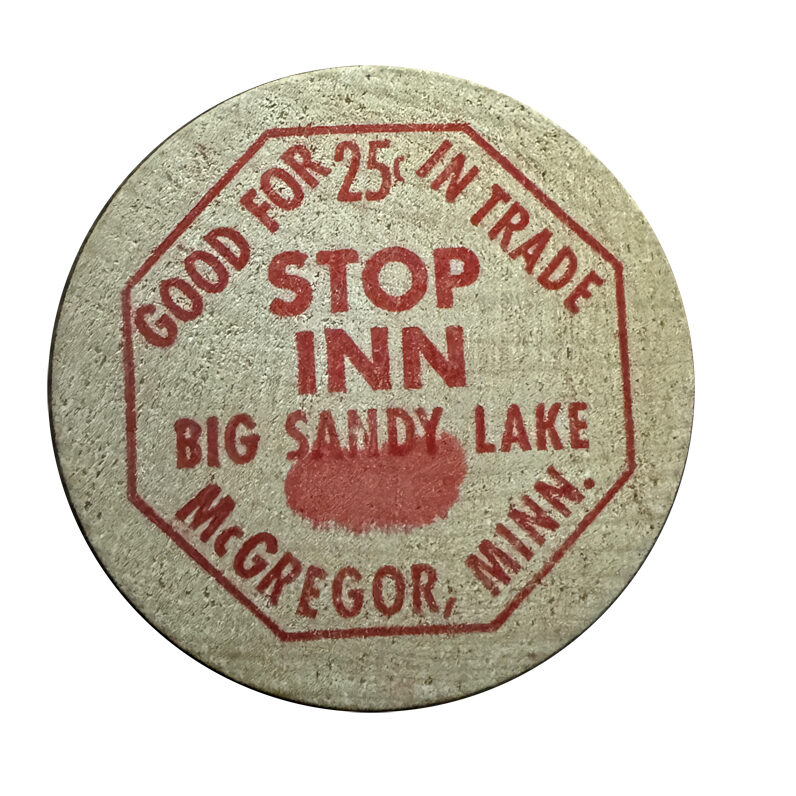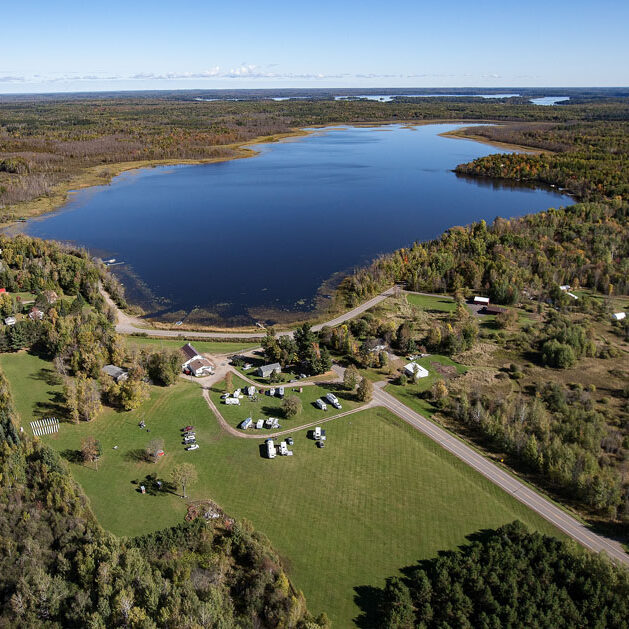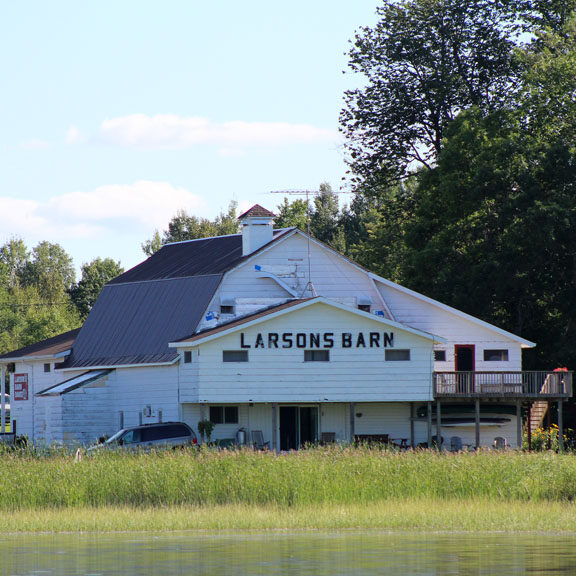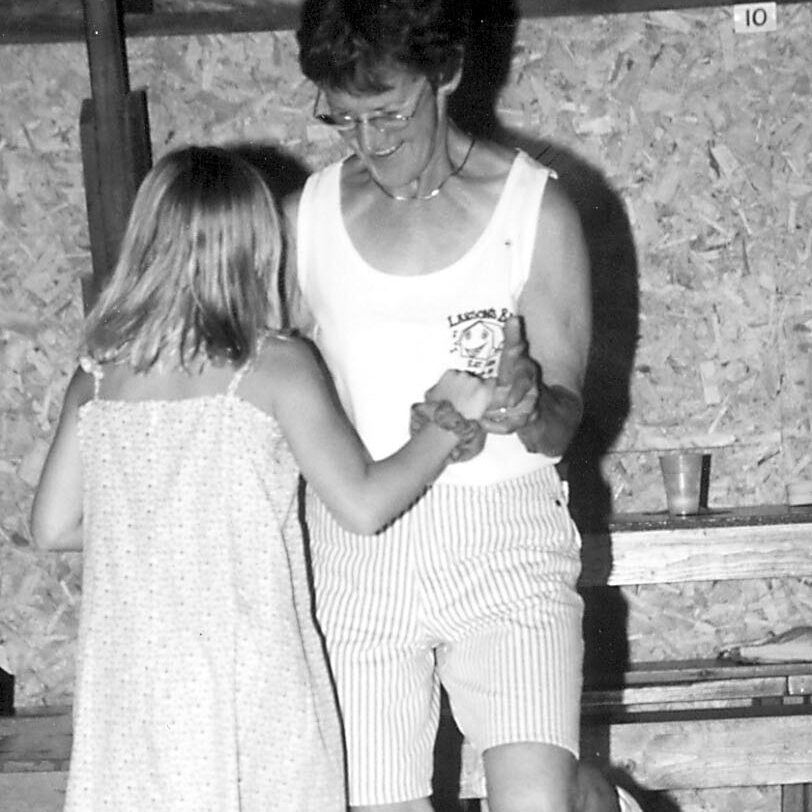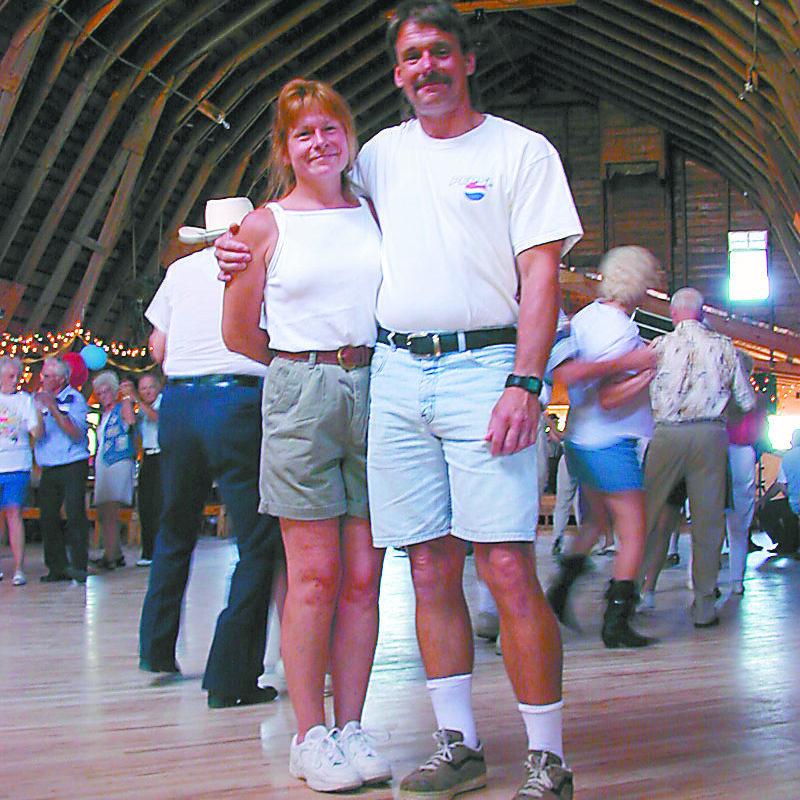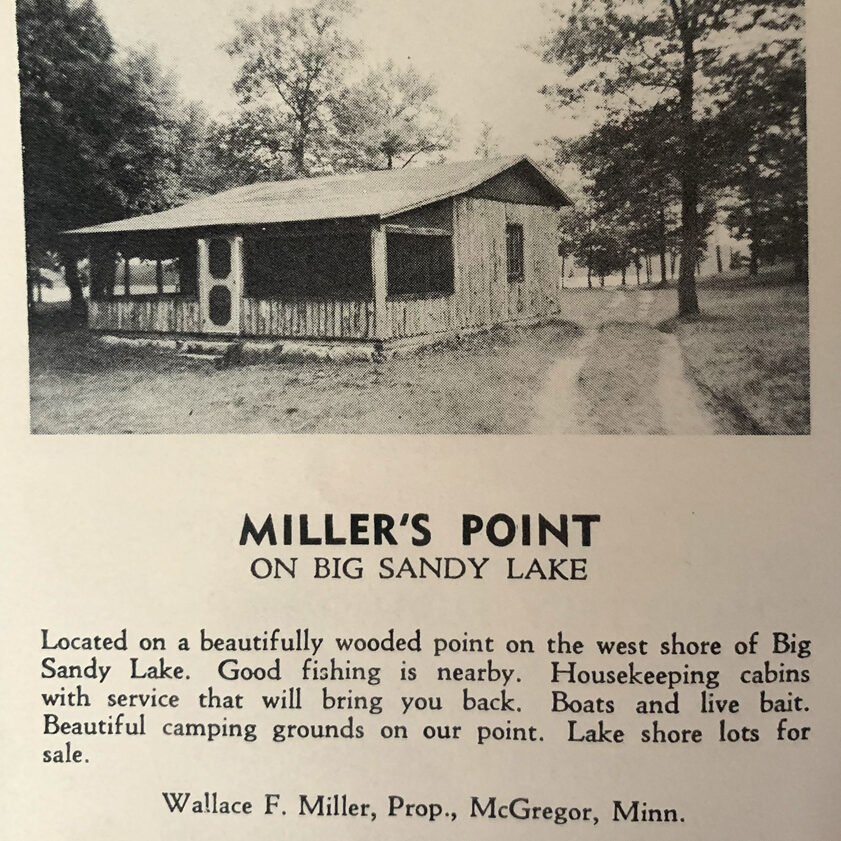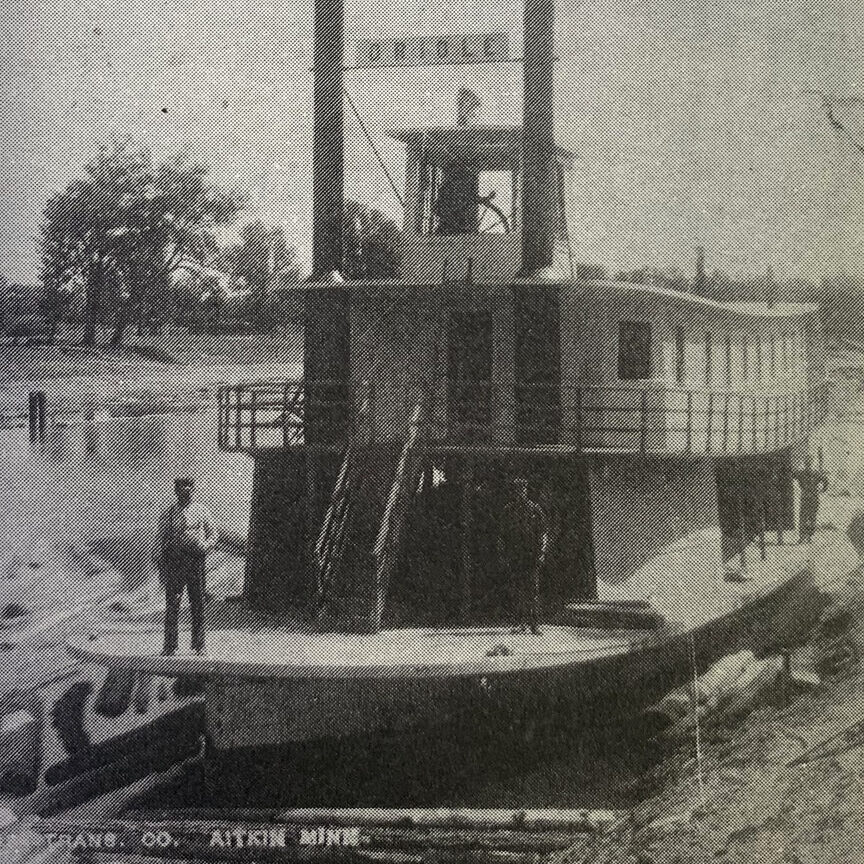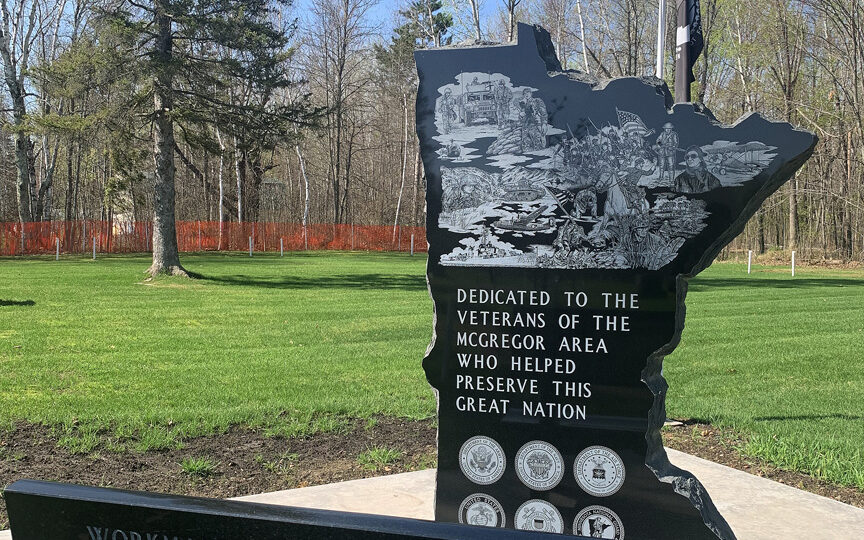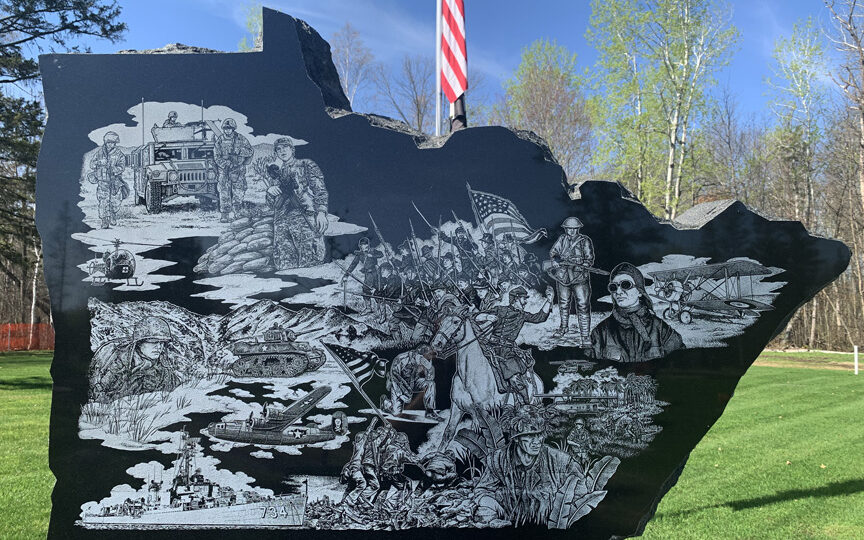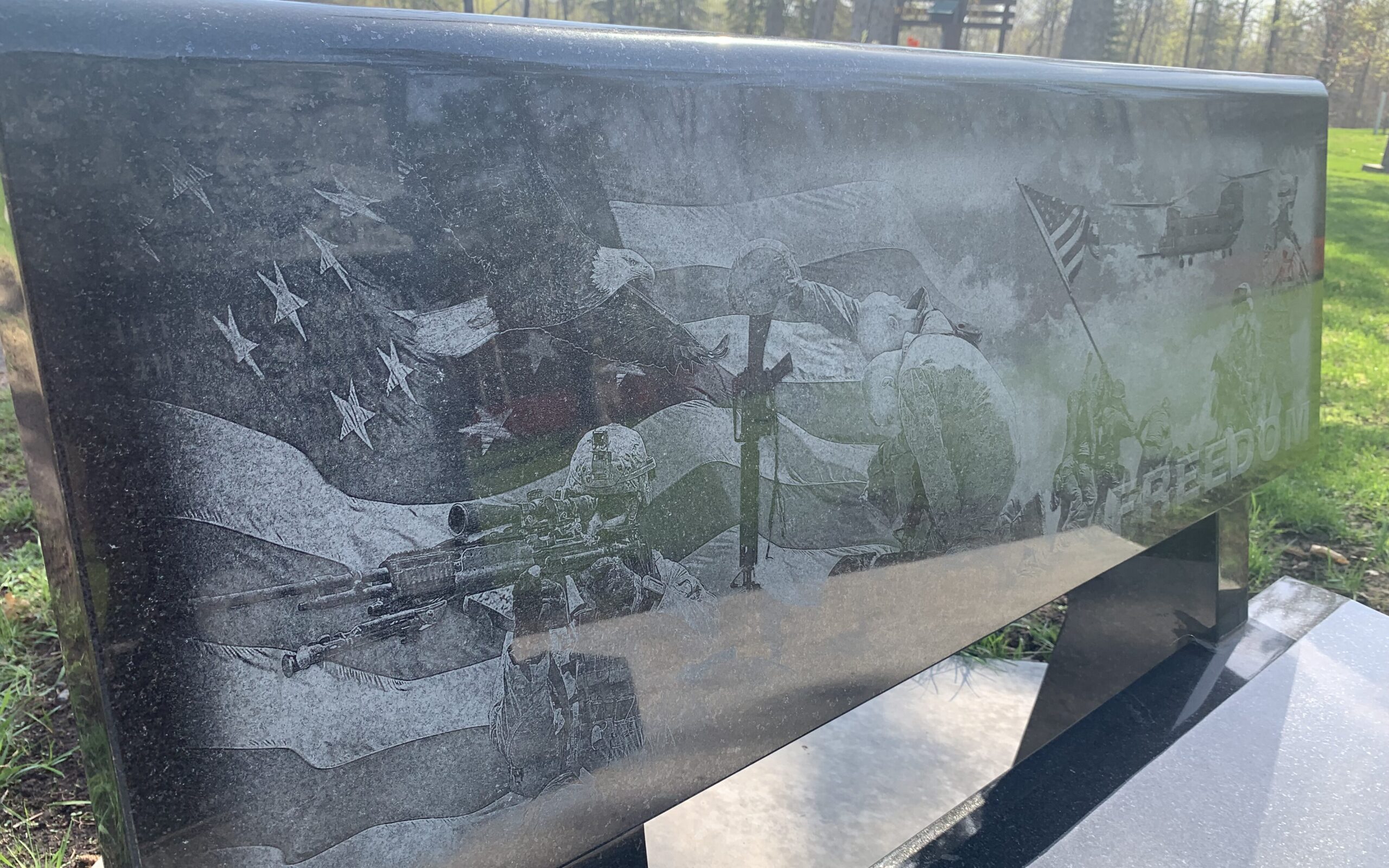Township History
The earliest history of Workman Town has to include the Northwest Fur Company Post built in 1794 on the shores of Big Sandy Lake. According to Minnesota Historian Irving Harlow Hart, the Post of the Northwest Company on Sandy Lake in Aitkin County was the first enduring establishment of its type west of Fond du Lac on Lake Superior. “From the date of its erection in 1794 to the close of the period of British occupancy of the region after the War of 1812, it was one of the most important fur-trading stations in the Northwest,” he says in his book Minnesota History. “The location on Big Sandy (now considered Brown’s Point) was determined by its proximity to the route between Lake Superior and the Mississippi by way of the St. Louis and East Savanna rivers, the Savanna Portage, the West Savanna and Prairie rivers, Sandy Lake and Sandy River.”
In his book, Hart shared American General and western explorer Zebulon M. Pike’s first detailed description of the Northwest Company post on Sandy Lake. “Having left the main body of his expedition encamped upon the banks of the Mississippi, Pike and one companion pushed on northeastward to the station on Sandy Lake. They evidently missed the old portage trail (now Grouse Street and before that Bear Country Road) that led from the river to the lake, for Pike writes, ‘We traversed about two leagues of a wilderness… and at length struck the shore of Lake d Sable [Sandy Lake], over a branch of which our course lay. The snow having covered the trail made by the Frenchmen who had passed before with the rackets [snowshoes], I was fearful of losing ourselves on the lake…Thinking that we could observe the back of the other shore we kept a straight course, some time after discovered lights and on our arrival were not a little surprised to find a large stockade. The gate being open, we entered.”
The Post served the hub of two major fur trade routes — the Mississippi River and the Great Lakes at the time.
Another century passed before Workman Township became organized. The date was November 29, 1901. The first recorded minutes were taken on April 10, 1902 by township clerk L.F. Andrews. Town Supervisors were M. V. Jonell, W.C. Miller and E. Kullhem. The meeting was held at Rat Lake School house and the township was divided into four equal road districts with overseers — District 1 (T. E. Brown), District 2 (Mat Kullhem), District 3 (Herman Gustafson), District 4 (Walter Keeler).
In 1903, Jacob Joriman joined the town board in place of E. Kullhem. Frank Bilyeu became the overseer for District 1 and Ed Joriman for District 4. A motion was made that year to pay men working on the roads $2.00 for a 10-hour day or 20¢ per hour. $200 was also approved to purchase dynamite to be used on the roads.In 1904, Henry Chute was the township clerk. He and supervisor M.V. Jonell signed papers before the Justice of the Peace for the purpose of dedicating land for Lakeview Cemetery.
In 1908, ferry charges were established by the township at 60¢ for every man and team that crossed the Mississippi river. The Ferryman would keep 35¢ and the township received 25¢. W.C. Miller was the clerk from 1907 until 1909. J. A. Larson served in 1909 and Frank Rogers took over in 1910. Jacob Joriman served from 1911 to 1915.
Early homesteaders
Matt Kullhem: Homesteaded in 1893 and the farm remained in the family for over 100 years. Matt built the first school in Workman Township in 1894 known as Woodland School or the Kullhem School. Matt wanted his kids to be well educated.
Louis Anderson, Patrick and Hannah Sanders, and Alex Coleman were also listed in the 1895 census. In the 1900 census, two more families showed up — Johan Jacobson and Charley Johnson.
Walter Keeler homesteaded around 1900 just west of Rat Lake School. Walter was a Town Supervisor, was on the Rat Lake School board and also drove bus for the school.
Thomas and Annie Brown: Purchased what is now called Brown’s Point on Big Sandy Lake in 1900 for the sum of $399.18. In 1912, the Browns sold the land where the Pleasure Palace would be built in 1930.
In 1905, the area boomed with a new school in the south (Rat Lake School) due to several families moving to the township. Emil Enlund was one of the homesteaders near Rat Lake. Emil came from Finland and farmed like many of the folks in Workman Township. He was also considered the veterinarian of the community.
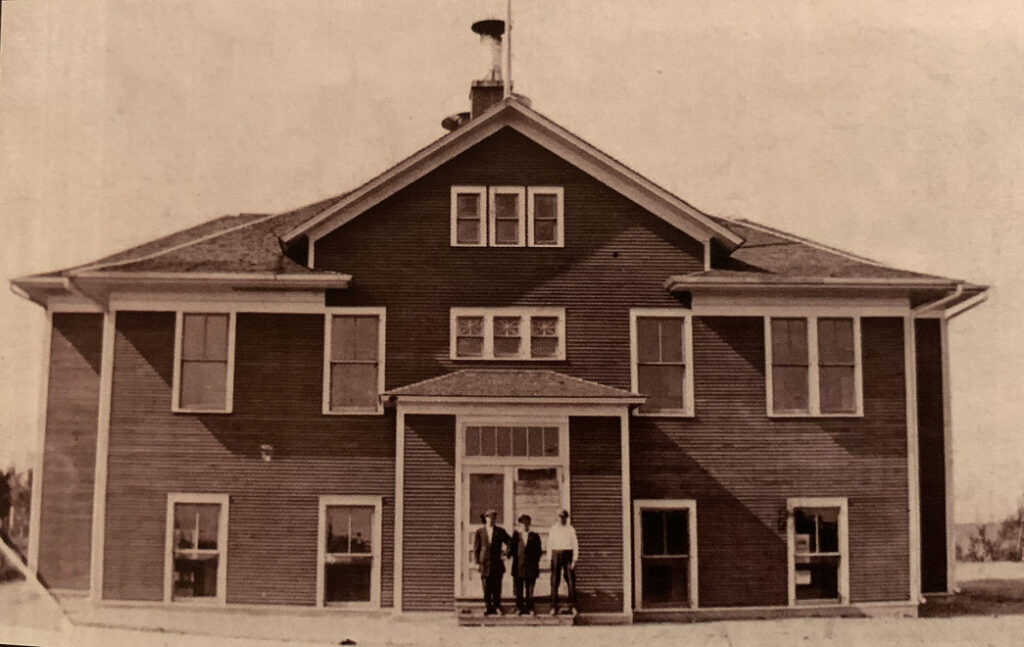
Peter Wold found his property in Workman Township by building a raft with three logs and floating down the Mississippi River with his friend Mr. Sunset. According to Rat Lake School teacher Ruth Muller Johnson, “When Mr. Wold and Mr. Sunset came to a place they liked, Mr. Sunset said, ‘You take the left and I’ll take the right.’ That is the way they found their land.”
The Wold Farm would eventually host the local ferry across the Mississippi River from 1908 to 1934.
Frank and Caroline Bilyeu came to the Rat Lake Community in 1903. Gustafsons, Dahlquists, Isaacsons, Bilyeus, Warrens, Larsons, Haglunds, Carlsons, Sanders and Jorimans all created the early Workman Town community.
A township with four schools & several names
District #21 (North)Woodland School or Kullhem School
Pine Knoll School, Kant School or Wold School
District #50 (South)
Lakeside School or Rat Lake School
Bilyeu School
The first schools in Workman Township go all the way back to one of the first homesteaders, Matt Kullhem (1893). The Kullhem farm would remain in the family for over 100 years. Matt would be the first to build a school in 1894 called the Woodland School (District #21) or the Kullhem School.
Matt, and his wife Josephine, wanted their six boys to be well educated and learn the English language.
According to information compiled in a book titled Schools of Aitkin County Minnesota, Woodland was built some time between 1894 and 1900 at a cost of $165.24. In 1898, 16 chairs were purchased for pupils and one desk for the teacher. Mrs. Ellis Kullhem and Mrs. Andrew Kullhem taught in this school. Mrs. Ellis Kullhem was on the school board when they consolidated with Palisade.
Charles Kullhem (1931-39) shared his memories of Woodland School: “Inkwells, wood stove, trouble makers, spot in the corner.”
Lakeside School District #50
District #50 was established in the year 1900 and mention of Rat Lake School appeared in the first official Workman Township meeting held April 1902. The meeting was held at the school. One account has Rat Lake School (officially Lakeview School) opening in 1905.
Walter and Pearl Keeler were instrumental at the school back then. According to Myrtle (Isaacson) Wisuri, Pearl Keeler was the first teacher. Students in her class were Uno and Birger Jacobson, Emil and Emma Ostman, two Jonell bothers, Matt and Edmund Haglund, George Dahlquist, Sim Bilyeu and Denton Underhill.
Walter drove school bus and was on the school board with Victor Isaacson and Henry Chute. “In the spring and fall, wheels were used on the bus body,” she says. “When the snow came, sled runners were put on the bus. There was also a wood burning stove on the bus to keep the children warm.”
Pine Knoll School
In 1912, Trustees of District 21, Mamie Saunders, Fredericka Wold and Thomas Brown (Browns point on Big Sandy Lake) purchased an acre of land on Wold Road for the sum of one dollar. The goal was to build a second school: Pine Knoll School (District 21) on the east side of the Mississippi River. This was for children living east of the river as the only way across the river was by ferry, which could not run during certain times of the year.
A signed petition by Thomas Brown dated 1914 and one again in 1920 was discovered revealing that the County Board most likely denied them each time. A school census for 1921 listed 12 school age children: Maurice Christensen (8), Junior Christensen (7), Myrtle Hovseth (9), Anna Kant (13), Louise Kant (10), Alice Rian (9), Arnold Rian (10), Arthur Rian (14), Doris Weber (6), Irwin Weber (13), Leon Weber (8), and Nelly Bilyeu (14).
The school would come to be known as the Kant School or the Wold School. Local historian and student at the school, Eileen (Wotring) Keen wrote in her book “Footprints of Backwoods Settlers” that teachers at the school included her mother, Mabel Fix Wotring (1923-24), Evelyn Landgren (1925), and Edith Balm (1926). “During Christmas vacation in 1928, our teacher married and didn’t want to finish the school year,” explains Eileen, “so the school board decided to transport us to Rat Lake School.
Ivy League of Schools
In 1913, the “Ivy League of Schools” was built on the hill overlooking Rat Lake. According to Schools of Aitkin County Minnesota, the school was built at a cost of $6,000 and included a teacherage. The school was located on the corner of 232 (present day 480th Street) and the Caird Road (present day 241st Place).
There were many teachers at Rat Lake School — Miss Hazelton, Miss Pearl Silliman, Mrs. Carrie Anderson, Miss Ragnhild Pearson, and Mr. Swieckart in the early days. Ruth Muller would later teach the lower grades and Miss Ritaala teaching the upper grades. Dorothy Keating and Violet Anderson were mentioned in the Aitkin Independent Age in 1932.
A McGregor graduate (Class of 1933) Dorothy Rice would be the last teacher at Rat Lake School. She arrived in 1940 and recalls the school’s heyday. “The school held classes on two levels with two teachers,” recalled Dorothy. “When I began teaching, enrollment was down to 28 pupils. I was the only teacher, and all eight grades used the upper room.”
Dorothy’s beginning wage was $80 a month––after five years it gradually increased to $105 a month. Dorothy continued to reminisce. “My first year was a challenge as there were five big eighth graders, three boys and two girls. One was a note writer, but she gave up when she was caught too many times.”
On an interesting note, Dorothy shared that she taught her younger sister, Beryl, after the family bought a nearby farm in 1942. “It seemed strange for Beryl to call her sister ‘Miss Rice’ while in the classroom,” she said.
Dorothy wrote about her experiences, “Although there were times when we had minor problems, for the most part we learned our lessons and enjoyed our play time. We had fun together playing baseball, pitching horseshoes, and other games. On rainy or cold winter days we played in the big room downstairs.”
In the winter, skating was a favorite activity of her pupils, and Dorothy often joined them. “They thought it was wonderful that I could skate backwards on my figure skates and stop on my toes. I really wasn’t a good skater, but they liked to have me along.”
During Dorothy’s teaching tenure, she lived near McGregor, so each month she would pick up the government allotment of flour, sugar, butter, prunes, and huge tins of peanut butter along with other supplies provided by the school board. “I would bring them to our cook, Mrs. Mansmith. She prepared many lunches of pork and beans, macaroni and cheese, and peanut butter sandwiches. She baked many peanut butter cookies and sweet rolls with jelly and prunes on top.”
Some of the students Dorothy taught include Terry and Ray Kullhem, C.J. Meacham, Deloris Joriman Demenge (who has the school bell), and Darrel Olsen. In August of 1945, Dorothy married Morris Miller who was one of the board members that hired her.
Bernard Jacobson, a former student at Rat Lake School, has several memories. Bernhard recalls slingshot fights, learning to read, and being scared of the flush toilets. More memories include flipping the teeter-totter over, sliding down the hill, skating on the lake at recess, and the early Ford “snowmobile” mail truck.
“Most of the boys carried slingshots,” Bernhard shared in a typed recollection of school days, “and we began to engage in a bizarre recess game back in the woods by the bus barn. We would [hide] ourselves among the bushes and trees, draw and fire at anything or anyone that moved.”
“A few got their bruises and lumps. Fortunately, the janitor became aware and put a stop to the craze before anyone got seriously hurt,” Bernhard recalled.
Whole families gathered for an all-day picnic at the end of the school year.
By 1945 enrollment had dropped so much that the school board voted to consolidate with McGregor. The building was sold to Workman Township for $1.00.
Bilyeu School also appears in the records and is identified on the map, but no information was available.
The Historic Wold Ferry & the Riverboat Oriole
When looking back at the early history of Workman Township, the Wold Ferry became a significant crossing point on the Mississippi River. The Wold Ferry operated from 1908 to 1934. A public access currently exists on the west side of the river. The Wold Farm still remains on the east side of the river. Peter and Fredricka Wold were married in Minneapolis and moved up to the farm on the Mississippi in 1903.
According to accounts by Myrtle (Isaacson) Wisuri, Peter Wold and a friend, Mr. Sunset came up to McGregor to look for a farm. “They went from McGregor up Sandy River until they came to Big Sandy Lake,” she recalls. “They put a sail on a boat and sailed to Libby catching fish along the way.”
Once in Libby, at the outlet of Big Sandy Lake by the Mississippi River, they built a three log raft and floated down the river looking for good land. “They stopped at Sanders (Workman Township homesteader pre 1900) for dinner,” Wisuri explains. “When they came to a place they liked, Sunset said, ‘You take the left and I’ll take the right.’”
Peter Wold’s great grandson, Steve Wold, in his recollections stated that they began with 80 acres and noted that the first summer, the family lived in a tent. “They lived in a tent and then they built something similar to a cook shack on skids,” he said. “That first structure would be later used in the logging camps.”
Wisuri account noted that Wold’s eventually cut logs, hauled them to the sawmill and built their new home by October. That same year, Peter took his last $30 and purchased a cow. “Mr. Wold bought the cow from Mr. Wickstrom and went across the river,” says Wisuri. “The cow gave enough milk and butter for the family and butter to sell.”
The Ferry was established in 1908, and according to Steve Wold the power needed to move the ferry was simple — the use of a cable and the current of the river.
Steve noted that many of the residents over on Big Sandy that wanted to go to Aitkin or Palisade would use the ferry to cross the river. Steve also shared that there was another ferry to the north (Libby or Lee Ferry Boat Crossing).
Those that lived on or near Big Sandy would travel the path that was once the portage from the lake to the Mississippi River to access the Wold Ferry. After years and years of development by Peter Wold, the road became known as Wold Road and later Bear Country Road. Today, it is called Grouse Street.
That same road would become the site of one of Workman Township’s early schools (Pine Knoll School, the Wold School or Kant School).
Fredicka Wold was a Trustee of District 21, and along with Maimie Saunders and Thomas Brown purchased an acre of land on the Wold Road for $1.00 to build a second school. The school was near the intersection of the road that traveled south to Rat Lake.
Stories of the ferry include a little family rivalry. “Before my grandfather, Edwin, turned 16 the three boys would be out working and see someone coming to get across on the ferry,” Steve shared. “Archie was very tall and long-legged and would always beat the other two to get the dime to cross on the ferry.”
Wisuri had a similar account. “In 1908, the county and township each paid half for the ferry. Mr. Wold would have to repair the ferry when needed. He could keep the fare for taking passengers across the river. Wagons 60¢ including horses and people with the wagon. A single person wanting to get across was 10¢.”
The first mention of the ferry in the Workman Township logs was at a board meeting held June 30, 1908. The board approved: The following prices were fixed by the board for the ferry charges. The Ferryman to give town 25¢ every time the ferry is used to cross the river. The Ferryman to be allowed to charge 60¢ and to retain 35¢ for his fee for every man and team put across the river.
Riverboat Teacher recalls her Riverboat Oriole trip
There was some question about the ferry operating during the time of the riverboat Oriole. They did indeed take place at the same time. The riverboat The Oriole (1908 – 1918) was built in 1907 by Viebahn and Punteney for service on the Mississippi. The Oriole was launched in June of 1908.
From 1908-1910, the Oriole transported commercial freight and passengers between Aitkin and Grand Rapids. In an account from Schools of Aitkin County, Minnesota, 16-year old Verna Evens, titled “the Riverboat Teacher” recalls her memories traveling to her first teaching assignment at the Wilderness School on Big Sandy Lake from Aitkin, Minnesota on the Riverboat Oriole.
Verna was nervous about the trip, but it would be memorable. She asked where the school was located: “Wilderness is located on the east side of Sandy Lake. You will get on the Riverboat Oriole and they will take you up the Mississippi River through Palisade to the Sandy River. You will go through Libby Locks, to Brown’s Point and then another boat will take you to the school…”
Verna had many memories of that trip on the Oriole, but there were three landings of particular interest: “I was standing on the bow when the Oriole’s steam whistle blew. I covered my ears and at the same time I loved the sound. A few moments later, I heard the sound of a dinner bell vibrating up the river.”
The mate explained: “Kullhem’s Landing has this dinner bell that they ring to let us know that someone wants to get on the boat. They also have a barn that horses can be left in while folks take a trip.”
Verna soon noticed a cable stretched across the river. It appeared that the boat would run into the cable and snap it which would be very dangerous, however, a few moments later the cable dropped into the water and the Oriole passed safely on.
The Oriole approached Sanders Ranch and the mate had a mail satchel in hand as the Oriole dropped him off and the Oriole continued on it’s way. “Why are we leaving the mate?” asked Verna.
One of the men answered, “You will soon see.”
The Oriole continued on its way, only the river seemed to go in an almost complete circle and soon the boat was back near Sander’s Ranch House and the mate hopped back on board with the mail. Sander’s Ranch was often called the portage, however, it was not the boat that was portaged, but the mate and the mail.
Many canoes that used the river did portage and saved over a half mile of paddling. Since that time, the river cut off the loop; there is no longer a portage at this location.
It was just getting sunlight when the paddlewheel steamboat Oriole entered the Sandy River. The Sandy River was a little over a mile long and then we were into the Libby Locks. Actually, they steamed the Oriole into a concrete box that was longer than the boat. The concrete gates were closed behind us. Water drained from the box and raised the Oriole to the level of Big Sandy Lake. “What a beautiful place. The scenery along the Mississippi was enjoyable, however, Big Sandy Lake was just spectacular. Open spaces over water waves and beautiful shoreline on a sunny day. What could be better? We traveled down the west side of the lake to Brown’s Point and that is where I ended my wonderful riverboat trip.”
In 1911 the Oriole was purchased for $3500 by the U.S. Army Corps of Engineers and equipped as a dredge boat. From 1911-1918 the Corps used the Oriole as a dredge and snag boat. Today, the pilot wheel of the Oriole can be viewed on display at the Sandy Lake Visitor’s Center.
The dredge machinery was later removed and the boat sold in 1918. The Oriole was towed into Sandy Lake where she was beached on the shore near Libby and Workman Township and used as a resort hotel. Known as The Ark, the riverboat turned resort building, was later demolished in 1941 and the lumber salvaged.
Resorts & Establishments
Wotring Resort • Pleasure Palace Savanna Fairways • Larson’s Barn • The Stop Inn
The history of Workman Township includes a number of establishments including resorts, golf courses, dance halls and bar and grills. Here are a few incomplete histories of some of the more popular places to visit.
WOTRING RESORT (1920)
Wotring’s Viewpoint Resort was one of the first resorts on Big Sandy Lake and it had a rather interesting origin. Around 1920, Clark and Mabel Wotring came home to find little piles of clothes on their living room floor. Locals came to swim in the lake. “Mom looked at Dad. Dad looked at Mom,” says daughter Eileen (Wotring) Keen in her book, “Footprints of Early Backwoods Settlers”. “And right then and there they got the bright idea: if everyone liked their place so much, why not have something these people, and others, could come to and pay for!”
The Wotrings started building cabins. Boats and bait soon followed. It grew to nine cabins, a houseboat and a large fleet of row boats. “The houseboat was quite an attraction. Built on two 50-foot pontoons, it was one room with a huge railed deck,” explains Eileen. “No running water, but a double bed, a two burner cook stove, table and chairs. Because it was anchored out in the lake, it was necessary to take a row boat to it.”
One couple that stayed had an unfortunate occurrence. “When the wife was doing the breakfast dishes, she grabbed her husband’s cup and tossed the water into the lake. The splash told her that was where he had put his teeth the night before,” recalls Eileen. “We kids unsuccessfully dove for them.”
According to an article in the Pilot Review, one annual event that occurred in the early 30s was the annual picnic on an island. “Clark would pile cottagers in row boats, fastening one to another by the anchor rope and tow them to an island for an all-day picnic.”
The Wotrings made their income at the resort from Fishing Opener (Walleye and Northerns) through Labor Day. “For those of us in the resort business,” Eileen shared in her book, “the fishing openers, 4th of July and Labor Day were big weekends.”
Eileen recalled a night in June where her father was lying in bed with his hands behind his head, staring at the ceiling. “Suddenly, with enthusiasm, he said, ‘Well, tomorrow’s the day!’”
Mabel, after almost 30 years, thought Clark had finally remembered their wedding anniversary and asked, “What day?”
Clark replied, “Well, the opening of crappie season, of course!”
The resort business was a way of life, until the 40s when the Wotrings sold the cabins to private parties. In the meantime, Clark had raised turkeys and used some of the cabins as brooder houses.”
THE PLEASURE PALACE (1930)
Big Sandy Bar • Sandy Beaver
The first big dance hall on the west side of Big Sandy, was welcomed by resort owners and tourists alike as an added recreational activity. Pleasure Palace, located on Brown’s Point, was built by Gustaf A. Karlson in 1930. Karlson came to Minnesota in 1929 on a camping trip with friends from North Chicago, and not long after, he moved to Minnesota.
The dance hall was known for having big name bands, while other times, local musicians would furnish the music.
The Fuders, who settled on the Sandy River, in 1910, often played there. Jay on the fiddle and Blanche on the guitar. They also played for neighborhood dances, at dance halls and in private homes. In 1920, they built a large barn in which they held what were probably the first true “barn dances” in the area.
Karlsons ran the Pleasure Palace for the first few years, then Harold and Dorothy Benedict rented and operated it. At that time, it was strictly a dance hall. During the prohibition era, the Palace offered boot-leg booze, slot machines (legal in Minnesota until the 1950’s) and a variety of card games — on which some patrons were said to have placed a friendly wager now and then.
According to an article in the Pilot Review with information compiled by Maydean Moore and Lee Vann, local Sheriff Ned Price made an occasional “stop on official business” and Harold paid a few fines. “A variety of ‘underworld’ characters were known to stop in at the Pleasure Palace,” states the article, “including Bonnie and Clyde! Their stay lasted only a minute or two. Harold ran them out unceremoniously.”
Dorothy Benedict was actually the one who named the establishment. It was while they were running it that Mabel Wotring (Wotring Resort) asked Dorothy, “If you knew you were going to be running it, would you have named it that?”
She answered, “No. It would have been named the Hell Hole.”
Harold Benedict was not just known for his involvement with Pleasure Palace. Harold also logged along the Prairie River, rafted logs across Big Sandy Lake and operated a saw mill where he planed and sold lumber. In Footprints of Early Settlers, it was explained that in 1930, “Harold pushed the last log drive to go through the Sandy River Dam.”
Frank Wotring also recalls the time that Harold ran over a bear with his model A. The bear finally got out from under the car and Harold chased it across Pleasure Palace’s Golf Course.
Some of the history of the Pleasure Palace is still yet to be uncovered, however, since 1981 the establishment, known as Big Sand Bar, was owned and operated by Dave Selbitschka and Nancy Brown. “If the walls could talk,” Nancy shared. “I could write a book, but would have to leave Aitkin County.”
Nancy shared that she recalls the band playing in the loft over the dance floor below. “The bands would enter through a door that led to the loft,” she recalls. “I also remember that in the early 70s the bar was where the fireplace is.”
Nancy recently sold to retired Minneapolis Policeman, Jim Walker, who renamed the establishment the Sandy Beaver. Jim continues to offer good food and fun entertainment.
SAVANNA Fairways (1966)
Savanna Golf Club • Minnesota National
It was reported by Aitkin Independent Age that construction of Aitkin County’s very first golf course (maybe 2nd), Savanna Fairways, began in 1966 led by a group of men — Jim Marcum (President), Gene Howe (Vice President), Warren Johnson (Secretary), Charles Peterson (Treasurer), Clint Wyant (Attorney), and directors, Bryce Kelsey, Howard Smith and Russ Maddy. Looking back at the history of Pleasure Palace, it has been revealed that the first golf course in Aitkin County may have been on Brown’s Point. Savanna Fairways would be the second golf course in Workman Township, Aitkin County.
The site of the member-owned, 9-hole golf course was chosen to be located on highway 232 east of Palisade near the Big Sandy Lake flowage. The contract for site construction went to Erland Ammala (East Lake) and Tim Murphy (St. Cloud) was chosen as the grounds architect. The club house (30×58) was built by Sonny Nistler (McGregor).
The course was built using a $76,490 FHA loan and $15,000 local money.
The golf course eventually became Savanna Golf and Supper Club and later Minnesota National. Wayne Alden purchased the adjoining property and developed an 18-hole championship course, along with an executive nine holes. A much larger and grandiose clubhouse replaced the old clubhouse. The golf course, now called Minnesota National Golf Club and Resort, has changed hands a couple times and currently owned and operated by the O’Shaughnessy Holding Company.
STOP INN
Randy’s Tavern • Checkpoint Bar • Fisherman’s Bay Bar & Grill
The history of Fisherman’s Bay Bar & Grill (located at the intersection of Highway 65 and Grouse Street) has been a little elusive. Recollections include Dottie (Dorothy) and Marty (Roger) Paquette purchasing Randy’s Tavern and renaming it Stop Inn somewhere around the mid 60s. The establishment was well known by visitors from all seasons and famed for the best cheeseburgers in the area for many years. They had alcohol set-ups and played many cribbage tournaments and were part of the poker runs.
Other owners included Jim and Norma Nunnalley (Stop Inn) and Darrell Stern (Checkpoint), before Brian and Sharon Napstad purchased it in 1997. “The burned out building had been sitting empty for almost 10 years when we purchased it,” said Sharon.
Fisherman’s Bay has offered a full food and beverage menu now for 27 years. The bar and grill is also home to the Up North Riders ATV Club. Many of the rides begin and end at the restaurant. They also hold monthly meetings.
LARSON’S BARN (1971)
Still serving the community after 50 years
In May of 1971, Lowell and Alice Larson bought a barn. Not a big deal, until you consider that they turned that barn into a widely-known, successful business—Larson’s Barn, situated across from Rat Lake in Workman Township. “My dad had barn dances way, way back,” Lowell said, explaining how it all began. “I always wanted to have a ballroom. This was the closest I could come.”
The Larson’s son, Lenny, remembers the day his parents purchased the barn. “We came up through the trap door,” Lenny explained, “climbed to the top of the hay, and Dad said, ‘This is our new dance hall.’” The rest, as they say, is history. Thirty years later, Larson’s Barn continued to hold dances, Music Fests, and hosted ‘Polka Fest’ complete with a Polka Mass.
The Barn was a family affair in the early years. “Dad was the only band back then,” recalled Lenny. “My Mom was the hostess and waitress, my sister, Linda, waitressed, and I helped bartend. From there it grew and grew and grew.”
The whole family remembers sweeping the old dance floor. “We had to repair some of the boards after each dance,” Lenny added. Later on, the Larson’s decided to put down tongue-and-grooved pine, but it wore out. They later improved the dance floor with maple.
“This was a long time ago,” Lowell began, “when we first started the barn dances, we had a leak in the roof. I didn’t have time to get up there to fix it so I put a can up there to catch the leak.”
After a while, this “bucket”, of sorts, had a rather important purpose. “Whenever we’d get going,” Lowell chuckled with the remembrance, “I’d look up at that bucket and if it was rocking, I knew it was time to play a different tune and tone it down some. We’d have about 300 people in there then and the place really got rocking.”
The Larsons celebrated 50 years in 2021. Lowell (2004) and Alice (2017) had since passed, but Lenny and Kathy continued the Larson’s Barn tradition of Saturday Nite Barn Dances and Fests until 2011 when they transitioned to becoming an event and wedding destination, now having hosted over 250 weddings and several family reunions.
Gone are the Annual Polka Fests and Polka masses, but Larson’s Barn weddings and events fill the summer and fall with private and public events.
RESORTS CLOSE BY
Miller’s Point, the Ark at Ridge Park, Boulder Lodge, Big Sandy Resort and Liberty Hall
Miller’s Point (near Wotring Resort), the Ark at Ridge Park (Libby), Boulder Lodge (Brown’s Point), the Triple H Resort owned by Herman Hohat and Liberty Hall (Logan Township) are just a few of the resorts and establishments that were in or near Workman Township borders.
Miller’s Point was east of Wotring Resort and they had three cabins. According to Eileen (Wotring) Keen, cars would have to go through their yard to get to the cabins. “Dad got a little tired of that and offered to donate land if Workman Township would put the road behind the garage. Thank goodness the board agreed.”
Ridge Park Resort, operated by George Mattoon, was located several hundred feet north of Brown’s Point (site of the current Scenic Overlook Rest Area). The Steamboat Oriole was beached at Ridge Park in about 1918, renamed the Ark and used as a summer hotel.
Boulder Lodge, owned by William Ingersoll was located on Brown’s Point and was known for the stone pillar entrance. Ingersoll uncovered many old artifacts from the Northwest Fur Company and had them on exhibit. He worked with Professor I.H. Hart researching the history of the Big Sandy Lake area.
Big Sandy Resort was located at the gateway to Brown’s Point on Big Sandy Lake, across the road from the Pleasure Palace. Ed and Estelle Czech managed the resort in the 1950s. Estelle’s parents owned and operated the resort prior to that.
Ed and Estelle recall musical groups such as the Six Fat Dutchmen, Frankie Yankovic, and “ Whoopee John” Wilfart who would perform at the Pleasure Palace and stay at the resort.
Liberty Hall was located on the Mississippi River near the border of Workman and Logan Township. The hall was built mostly by Workman Township residents.
The Workman Township Board thanks the Voyageur Press and Publisher John Grones and staff for the 4-part series on Workman Township. We feel it was an excellent review of the history of our township. We have received many compliments on the series.
To add more to current history: Workman Township in 2024 is a growing, stable township. Our highest priority is road maintenance as we have approximately 18 miles of gravel roads that we maintain. We also have approximately a 1,000 feet of asphalt road that is maintained by an adjoining township.
Over the last 12 years, Workman Township applied for and received approximately $300,000 in grant funds for road upgrading and improvements. Maintaining quality roads is our highest priority so that our citizens can safely travel for work, medical, shopping, or for any other reason. Our township has its own road grader, snowplow truck and water truck. Our township is serviced by two broadband companies – Frontier Communications and SCI of Hinckley, MN.
Besides our year-around population of 222 (last census), we have a large weekend and summer population who own lake homes mainly on Big Sandy Lake and Rat Lake. We also have a number of folks who visit and enjoy their wooded property. Minnesota State Highway 65 runs north and south through the eastern part of our township and Aitkin County 3 (480th Street) runs east and west through the southern part of our township.
We have the Mississippi River flow on the western side of our township.
We are active in the Aitkin County Association of Townships. Of the 40 active Aitkin County townships we currently rank as 20th based on population. We also maintain memberships in Minnesota Association of Townships and Minnesota Association of Cemeteries. These organizations help to keep us informed of current activities and pending changes as well as providing the township with competitive insurance and product purchases. A number of years ago we developed a very attractive website available to anyone wishing to learn more about Workman Township.
While much of our township is used for recreation, we also have a number of large farms that grow crops such as hay, corn and soybeans. We also have several logging companies that have significant logging operations. We have retail operations that include Minnesota National Golf Course and Resort, Larson’s Barn, Fisherman’s Bay Bar and Grill, and Sandy Beaver (formerly Big Sand Bar).
Workman Township also operates Lakeview Cemetery which is a two-acre cemetery plot. During the last several years we worked to improve the cemetery and make it more attractive. Several years ago we started a campaign to establish a veteran memorial at the cemetery. The local businesses, organizations, and citizens were very generous and have allowed us to place a beautiful memorial in the cemetery. Names of all the doners are inscribed on the rear of the monument.
Each year on Memorial Day Monday we have a program honoring veterans. We have a lot of local participation in this event. All the information printed in the Voyageur is posted to our website: workmantownshipmn.org.
Several years ago Workman Township was the recipient of the prestigious Local Government Innovation Award from the Humphrey School of Public Affairs at the University of Minnesota. The School ranks among the country’s top ten public policy and planning schools.
Recently, Workman Township has undertaken a project to establish a helicopter Air Evac site at the corner of Highway 65 and Grouse Street. This will be a location to have injured/ill people picked up for air transport to medical facilities. Also available we will be an Automated External Defibrillator (AED) available 24/7/365 for sudden cardiac arrest victims. Plans are to have the AED cabinet and helipad completed by the end of April 2024.
Contributors to Workman Township History: Carol Holten; Steve Wold; John Schmidt; Marv & Bev Holstein; Jim Berg (Current Township Supervisor); Oscar & Martha Liljenquist; Betty Jo Johnson, Eileen Keen (Footprints of Early Backwoods Settlers); Ruth Muller Johnson (Aitkin County Historical Society); Myrtle (Isaacson) Wisuri (Aitkin County Historical Society); Cynthia Brekke (Voyageur Press); McGregor Pilot Review (1981); Minnesota History by Irving Harlow Hart; Schools of Aitkin County, Minnesota.
John Grones, Publisher
Voyageur Press
218-409-4096

